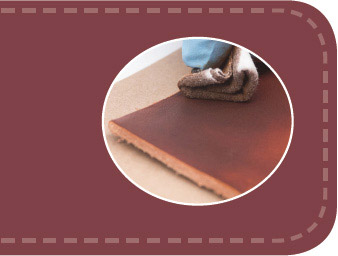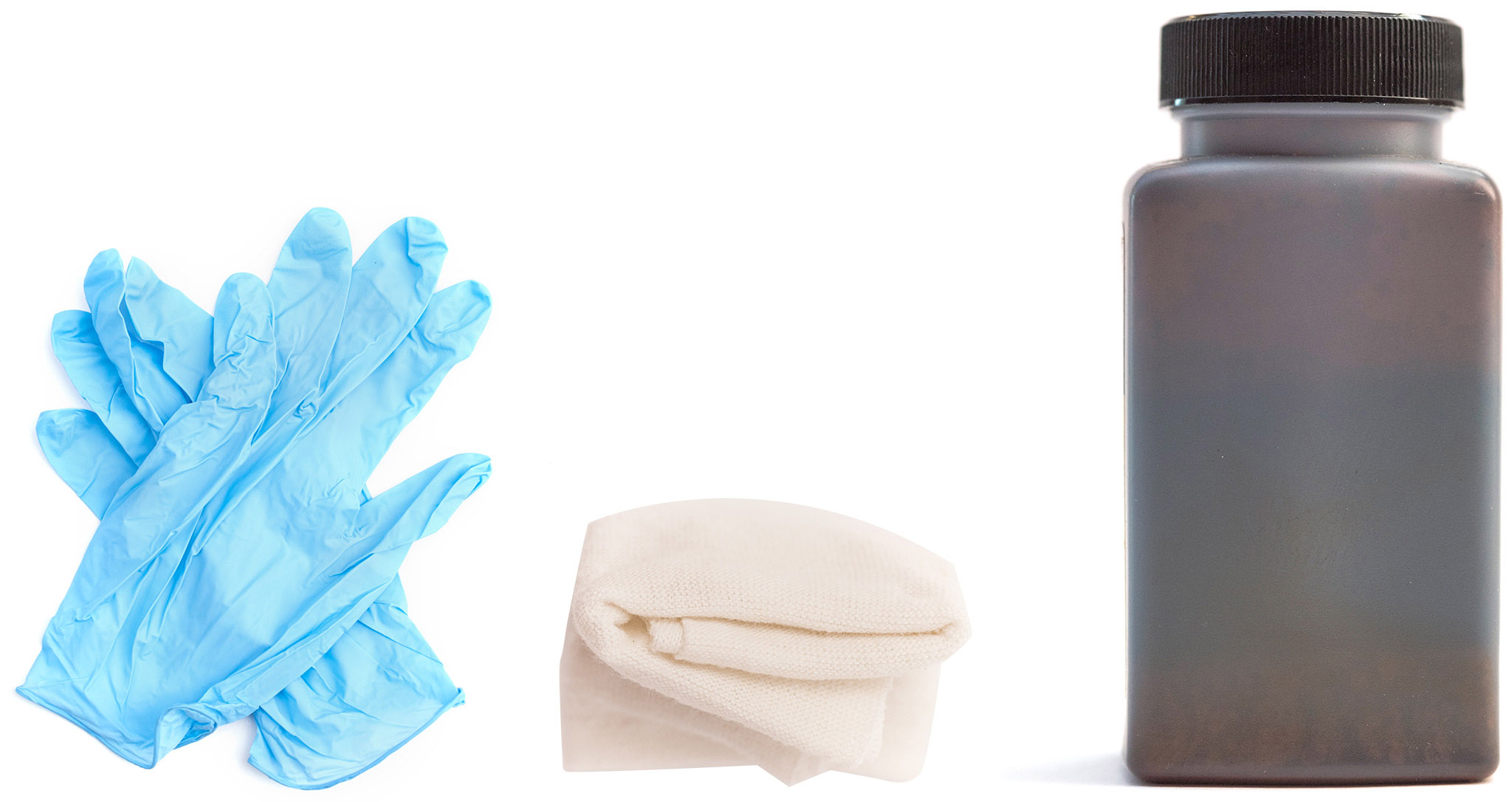
Finishing Leather: Dyeing
Bridle and garment leather come pre-dyed, but vegetable-taned leather can be hand rubbed with oil dye for a rich, deep color. Oil dyes come in a limited color palette, but they penetrate deeply and allow the natural variation in the leather surface to shine through.
Materials
Vegetable-tanned leather
Oil dye
Tools
Latex gloves
Clean rags
Scrap piece of vegetable-tanned leather
Newspaper or butcher paper (optional)


1 Prepare for Dyeing. Protect your work surface with newspaper or butcher paper, and put on latex work gloves. If the leather is dirty, clean it with mild soap diluted in water. Let dry fully before dyeing.

2 Apply the first coat of dye. Tip a small amount of dye onto the rag and swab on the scrap leather to remove excess dye. Apply lightly to the grain surface of the leather in small, quick circles, moving from the upper-left corner to the bottom right. Add more dye to your rag as needed. Let dry 15 to 30 minutes.

3 Apply the second coat of dye. The first application of dye often looks uneven after drying, because it has only penetrated the top surface. Repeat Step 3 to apply a second layer of dye to penetrate more deeply and even out the color.

4 Repeat application if necessary. If you’d like a darker color or if the leather still looks uneven, continue to apply light coats of dye, allowing time to dry in between. When done, allow the leather to thoroughly dry overnight.
Always follow dyeing with glossing to preserve the color and finish the look. You can always gloss leather without dyeing to preserve the natural color, but never dye without glossing, because the color can come off on your hands.

